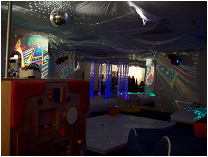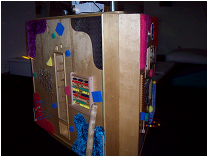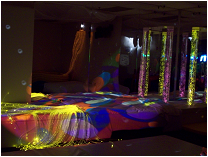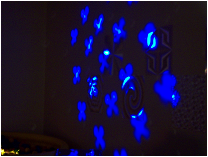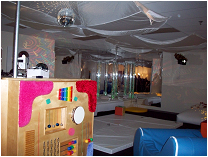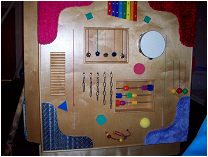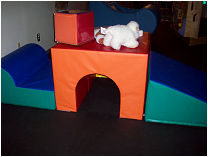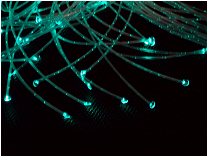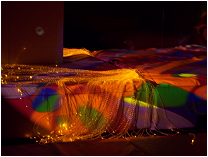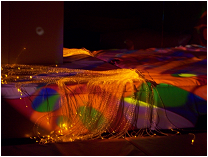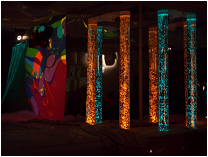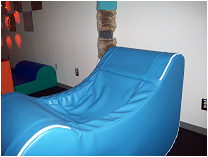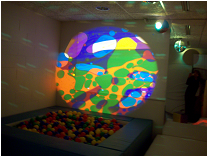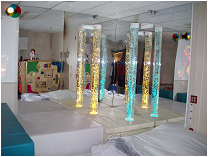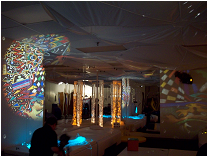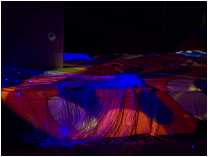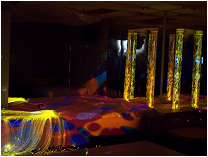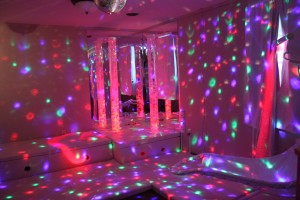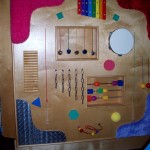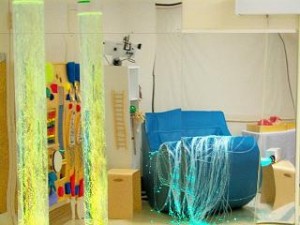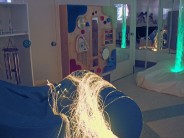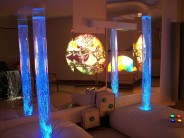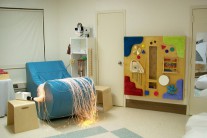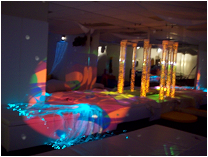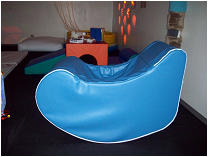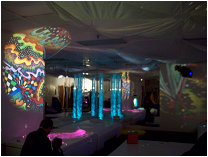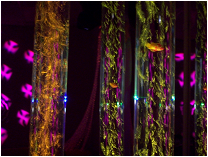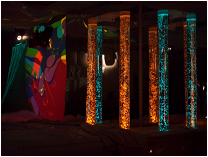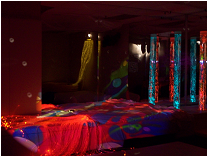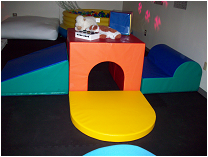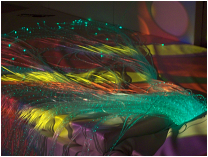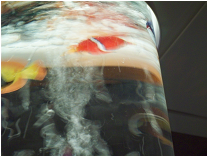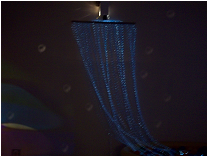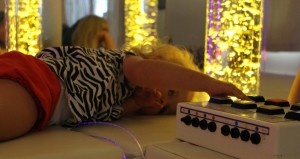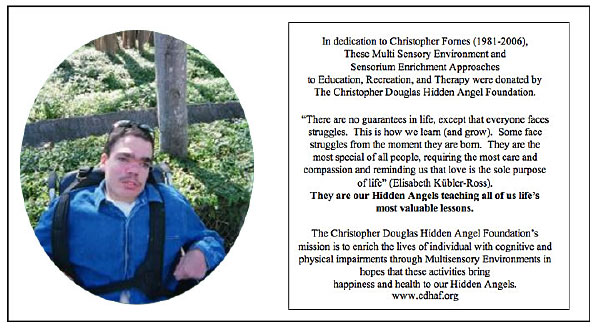“There are no guarantees in life, except that everyone faces struggles. This is how we learn (and grow). Some face struggles from the moment they are born. They are the most special of all people, requiring the most care and compassion and reminding us that love is the sole purpose of life.”– Elisabeth Kübler-Ross
These are our Hidden Angels – teaching all of us life’s most valuable lessons.
Multisensory room aids those with cognitive, behavioral disabilities
October 20, 2013 DETROIT LAKES, Minn. – When you first enter, a multisensory room looks kind of boring – it’s all done in white at the Developmental Achievement Center in Detroit Lakes.
So much for first impressions. When it’s in full operation, the room is like a 10-year-old’s dream bedroom: Pillars of bubbling water in one corner change color on command, or in response to the music. A waterbed surrounded by cushy mats occupies one wall and a vibrating bed occupies another.
Unbreakable mirrors of various sizes and shapes are in three of the corners, weighted strings of LED lights are within easy reach of both beds, a strobe light and mirrored disco ball are ready to give the room a dance party atmosphere, and a projector with attachments can create a wide selection of picture shows, shapes and colors on the walls and ceiling – depending on the needs of the client.
It’s all about the client’s needs at the DAC, and the $50,000-plus multisensory room can calm an anxious person or fire up a withdrawn one.
That’s why the room starts out neutral, all in white, and is adjusted slowly according to the client’s “sensory diet,” said job trainer Darcy Jahnke. She and her cousin, program supervisor Cheryl Jahnke, put the room through its paces recently for a reporter and photographer.
The multisensory room gives clients with cognitive impairments and other challenging conditions the opportunity to control all sorts of experiences.
These people rarely get to interact with the world the way most people take for granted.
“Limitations of movement, vision, hearing, cognitive ability, constrained space, behavioral difficulties, perception issues, pain, and other problems create obstacles to their enjoyment of life – multi-sensory environments provide opportunities for bridging these barriers,” according to the Hidden Angel Foundation.
Along with the Bremer Foundation and Wells Fargo Bank, the Hidden Angel Foundation helped pay for the multisensory room at the Developmental Achievement Center.
The Hidden Angel Foundation, which has helped fund more than 50 multisensory rooms, lists 19 benefits that come from using the room, ranging from increased concentration to improved coordination to a dramatic drop in stress levels.
“Time spent in a multisensory room has been shown to increase concentration, focus attention, improve alertness, awaken memories, and to improve mobilization, creativity, social relations and communications, and general awareness of the surrounding world.
“The varied optical, acoustic, olfactory and tactile stimuli help hyperactive individuals concentrate and focus better,” the foundation says.
But sometimes people are just having a bad day, or heading in that direction: The multi-sensory room gives stressed-out people the chance to relax and have fun as well.
The room opened in mid-July, and all but one client so far has enjoyed positive outcomes. “People who were agitated to begin with ended up happy, mellow, relaxed,” Darcy said.
The DAC serves 74 clients in its day program and another 30 in its residential program, Cheryl said.
“We’re still doing training on it,” she added. “We have a lot of clients, so we’re still finding out what people like.”
Source: INFORUM

